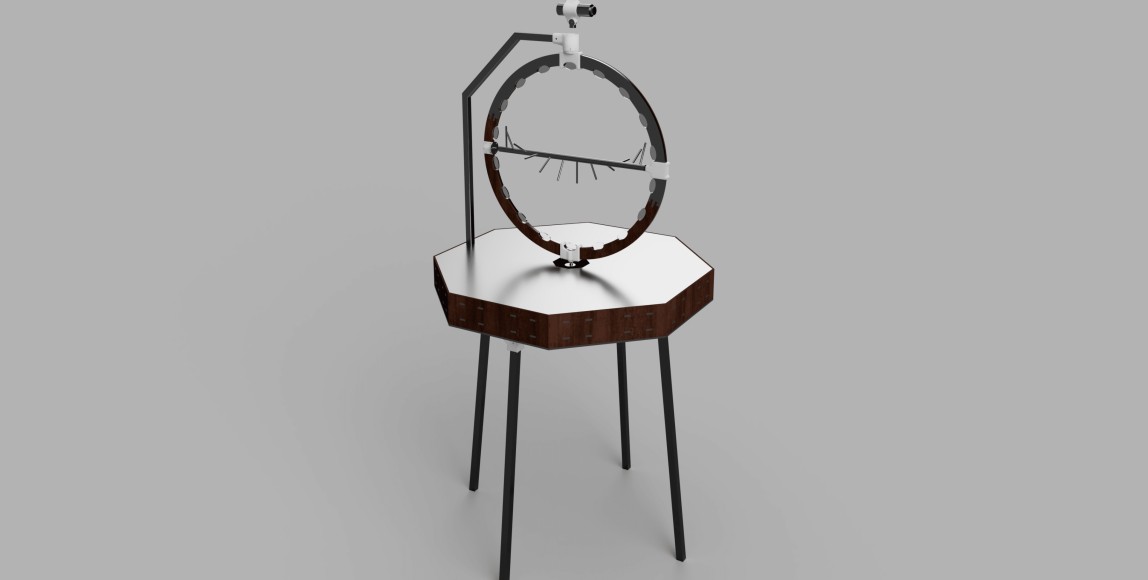CONNECT, the SFI Research Centre for Future Networks & Communications at Trinity College, was recently announced as one of five recipients of funding for the STEAM Art Collaboration project by Science Foundation Ireland and the Arts Council. The project pairs an artist with an Irish research centre to capture through art an important scientific concept and aims to engage primary school children and the wider public with these research centres through the intersection of art and science.
Ed Devane, Donegal based sound artist and instrument designer, will design a musical gyroscope entitled Rotation relay to represent the scientific concepts behind work at CONNECT. Research at the centre focuses on telecommunications, and specifically, this project symbolises work in the field of “quantum communications via space”. The artwork will highlight three key principles in quantum communications: superposition, entanglement and teleportation.
Gyroscopes, like the one being created for the project, can rotate in all three coordinate axes. The speeds of rotation in each of these axes will be controlled by an interface. The axes of the gyroscope will interact with LED light and magnetic sensors, which will trigger tones in a sequence. The information, held in sound or music, is then transmitted as an encoded audio signal and received at a different location.
In the SFI research centre statement by Jerry Horgan and Dr Deirdre Kilbane, the centre explained how this gyroscope encapsulates the principles of superposition, entanglement and teleportation: “Our research is on ‘Quantum Communications via Space’. We are looking to use quantum properties to secure and enhance the next generation of communications (data transfer) networks, which will include nano-satellites, or cubesats.
“These cubesats can be about the size of a pringles tube and will be in a low-earth-orbit, or about 35 times closer than the satellites traditionally used. As they are so close, they are also incredibly fast, and are actually faster than fibre optic over long distances, say between countries,” Horgan and Kilbane said.
“Security is based on two specific quantum properties, entanglement and teleportation. This is where two photons (little beams of light) are linked to each other no matter how far apart they might be and that information (data) can be sent across that distance by physically interacting with just one of them. We are using the property of superposition to enhance the communications, by increasing the capacity of the data transfer,” they said.
“Communications networks currently use bits (usually ones and zeroes or up versus down) to represent data, with superposition the data can be in more than one position (think of a coin spinning on its side, you see both heads and tails at the same time) which can be used to represent more data at a time. This is shown in the artwork, where the light represents the photon, which can be up or down, and left or right. The laser and speaker demonstrate the properties of entanglement and teleportation.”
Virtual exhibitions of the five pieces of artwork in the different centres will take place in May. The final works of art will be showcased virtually to primary schools nationwide in interactive exhibitions on Wednesday 12th May and Thursday 13th May 2021, alongside educational resources for the students to further explore the topics from the exhibition and to create their own STEAM artwork. A virtual exhibition open to the general public will then run from Thursday, May 20.






